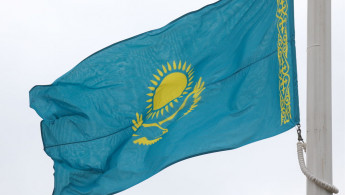Protests erupt in several Kazakh towns and cities after fuel price rise
Protests have erupted in several Kazakh towns and cities after the Central Asian nation's government lifted price caps on liquefied petroleum gas (LPG) and the cost of the popular alternative to gasoline rose.
Public protests are rare - and illegal unless their organisers file a notice in advance - in the tightly controlled former Soviet republic whose parliament is devoid of opposition.
The rallies have involved thousands of people. They began on January 2 - the day after the price caps on LPG were lifted - in the town of Zhanaozen, the site of the deadliest clashes between protesters and police since independence from the Soviet Union.
Protesters in Zhanaozen, an oil industry hub in the western Mangistau province where dozens of people were killed in protests in 2011 after the sacking of oil workers, demanded the price of LPG be halved from 120 tenge ($0.27) per litre to the level at which the fuel was sold last year.
Retailers have agreed to cut the price by a quarter but President Kassym-Jomart Tokayev's government said further cuts are impossible because of production costs.
The price had previously been regulated, but officials said artificially low prices were making LPG production infeasible.
Protests have spread to Mangistau's provincial centre, Aktau, as well as a worker camp used by subcontractors of Kazakhstan's biggest oil producer, Tengizchevroil. The Chevron-led venture said output had not been affected.
In Kazakhstan's biggest city, Almaty, police cordoned off the main square on Monday and Tuesday. Mobile internet was jammed in the downtown area.





 Follow the Middle East's top stories in English at The New Arab on Google News
Follow the Middle East's top stories in English at The New Arab on Google News


